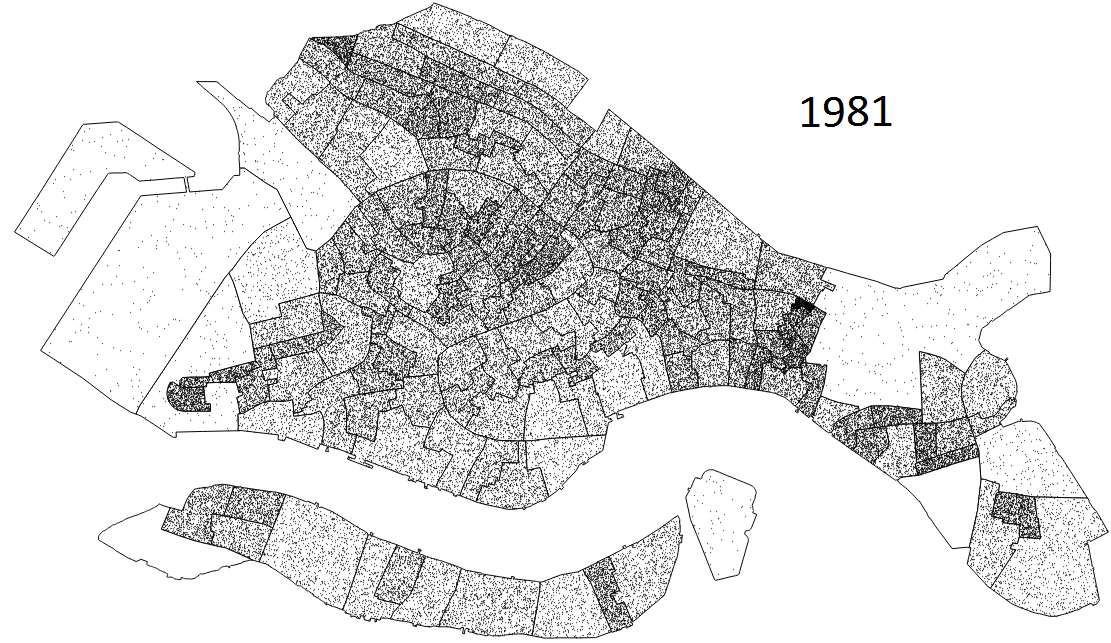Census 1981
This images are graphical representations of the population density of the city of Venice in the year 1981, broken down by census tract, as carried out by the ISTAT, or Istituto nazionale di statistica (in English: Italian National Institute of Statistics).
Census by Tract
The census is broken down into over one thousand subdivisions, each of which is a distinct geographical area below. Statistics are kept with the census tract at the smallest unit of measure, and as a result, the graphics below show these discrete chunks, coloring each one according to the appropriate statistical range.
Population
The key here indicates the number of persons living in the given census tract. It is not scaled by area.
Elderly Population
The key here indicates the proportion of persons living in the given census tract who are elderly (65+ years).
The dot map shown above displays one dot for every resident, placed randomly within the census tract of their dwelling.
Characteristics of the 1981 Census
The 1981 Census shows a relatively healthy city, one without significant clustering of any particular population. At this stage, Venice is fairly uniform across its census tracts, without wild variation or excessively large clusters of activity or dormancy.
Population
Each census tract seems to be very similar to its neighbors, with no sharp borders resulting in dramatic population differences in geographically similar areas. While the Piazza San Marco has fewer residents than the surrounding areas, the drop-off does not appear terribly sharp. While there are more sparsely populated regions near the docks, this is not surprising, as the maritime activity which has busied Venice for centuries dominates large portions of the available land.
Elderly Population
Similarly to its overall population, the elderly population of Venice does not seem to be concentrated around a particular area. The island of Giudecca seems to be younger than the rest of the city, perhaps because elderly residents are more motivated to plan to avoid the hassle of having to wait for a boat every time they want to get to the rest of Venice. Additionally, some areas which are distant from the center of the city - once again, the docks, as well as some census tracts in the east - are younger than the rest. It appears that this is simply the continuation of a pattern previously observed in Census 1981.


